Pilots of all experience levels seem to have some misconceptions concerning class C airspace. This was made apparent during two recent flights. One while planning a flight with a student through the class C airspace over Sanford, Florida. The second with an airline captain who had forgotten the speed restrictions within class C airspace causing us to slow much earlier than was necessary.
Let's review class C airspace and some of the nuances while operating within class C. You might be surprised by some of the symbols and operating rules even if you normally fly within class C airspace.
Class C Airspace Chart Symbols :
The following depicts the top of the inner circle from 4000 feet MSL(mean sea level) to the surface :

The Following depicts the outer circle from 4000 MSL to 1200 MSL :

The following depicts the class C airspace up to but not including the overlying class B airspace :
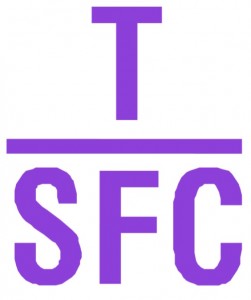
The magenta thick line box depicts the radio frequencies to use and who to contact :

Boundaries:
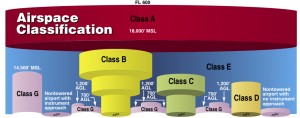
Inner circle from the surface with a 5 nautical mile ring up to 4000 above the primary airport.
Outer circle from 5 to 10 nautical miles from the primary airport and from 1200 AGL to 4000 AGL of the primary airport.
Outer area from 10 to 20 nautical miles from the primary airport but not depicted on the chart because communication with air traffic control is not mandatory but highly recommended.
Equipment Required:
Transponder with with altitude capability while within the lateral boundaries of Class C airspace
Two way radio.
Operating Rules:
Establish two-way radio contact.
You must establish two way radio communications prior to entering class C airspace. To establish two-way radio communications with air traffic control you should first give your position, altitude, and your request. Your request should include whether you are landing or transitioning their airspace.
If the controller has answered you with your call sign or registration number you have established two way radio contact. Now you are cleared to enter the class C airspace unless otherwise instructed.
Example: Two-way radio communications not established.
You call "Daytona approach Cessna 123NU twenty miles southwest, two thousand, landing Daytona Beach information Juliet. The controller responds "aircraft calling southwest standby." You have not established two-way radio contact and may not enter controlled airspace.
Example: Two-way radio communications establish.
If in the previous example the controller responded with "Cessna 123NU squawk 4525" you have established communications and are clear to enter their airspace. If the controllers response was "Cessna 123NU Roger" you may also enter the class C airspace.
Example: Communications established but not cleared into class C airspace.
If in the above example the controller response "123NU" squawk 4525, remain clear of class C airspace" you may not enter the airspace until you receive further clearance. Remember if the controller responds with your call sign or registration number you are cleared into class C airspace unless instructed otherwise.
Airspeed :
Airspeed maximum of 200 knots indicated within 4 nautical or 5 statute miles and 2500 feet above the ground of the primary airport.
Pilot Certification Required :
No Specific Pilot Certification is required but you will need to an additional endorsement if operating in Class C airspace with a sport pilot certificate.
Operating within class C Airspace:
Entering class C airspace begins in the same manner as every flight by becoming familiar with all available information. Before we enter Class C we should review the frequencies, airspace dimensions, weather, and our aircraft to determine if we are legal to enter the airspace.
Example: Entering Class C Airspace
Lets fly a short flight from Deland to Daytona Beach, Florida. During our preflight we determine our aircraft has an operating transponder and a two-way radio.
While reviewing the airspace on our chart, the outer circle indicates class C airspace from 4000 MSL(Mean sea Level) to 1200 feet MSL. Since this will be a short flight we will remain at 1000 feet and stay under the outer circle. Prior to entering class C we must establish two-way radio communication, but what frequency do we use?
While reviewing the airspace on the sectional chart we see the magenta box located south of the airspace with a frequency of 125.35. Confirming the proper frequency, review the Communications section for Daytona Beach in the Airport Facility .

Since Deland is close to Orlando we should also review the terminal area chart for Orlando. There are three boxes with frequencies in them and at first glance it might seem confusing. But upon closer inspection we notice one of the magenta boxes has an arrow pointing toward the Daytona Beach airspace with the instructions to contact Daytona Approach on 125.35.
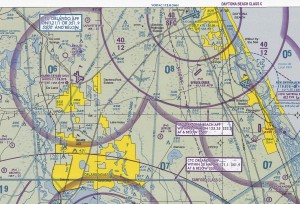
(click image to enlarge)
Example : Departing Class C from the primary airport
Lets now depart Dayton Beach and fly back to Deland. Prior to taxi listen to the ATIS(Automatic Terminal Information Service) and then contact ground control with your aircraft, direction of flight, requested altitude, and ATIS code.
An example of the communication between you and the controller:
"Daytona ground Cessna 123NU, at the FBO, information Whiskey, departing southwest, request two thousand."
Controller: "Cessna 123NU squawk 2343, maintain 2000 on departure"
You: "Cessna 123NU, two thousand, squawk 2343".
Controller: "Cessna 123NU read back correct contact ground on 121.9 for taxi"
You: "121.9 for Taxi, 123NU."
After tuning the radio to 121.9: "Daytona ground Cessna 123NU at the FBO ready to taxi."
The controller issues you taxi instructions and you taxi, do your run up, then contact tower. "Daytona tower Cessna 123NU ready for departure runway four."
Controller : "Cessna 123NU cleared for take off, fly runway heading."
After you are airborne the controller issues the clearance "Cessna 123NU contact departure on 123.9"
You: "Departure on 123.9 Cessna 123NU".
You switch to 123.9 and say: "Daytona departure Cessna 123NU climbing one thousand for two thousand".
Controller: "Cessna 123NU radar contact turn left heading 270"
You : "Cessna 123NU left two seven zero".
You clear the class C airspace on the way to Deland and the controller says "Cessna 123NU clear of class Charlie airspace, squawk VFR, frequency change approved"
You respond : "Cessna 123NU Roger. Have a good day". You change the transponder code to 1200 and switch the frequency to land at Deland.
Example : Entering Class C underlying Class B Airspace
This is a case where you must be vigilant and know the boundaries of the overlying class B airspace and the boundaries of the class C airspace you are entering. Planning a flight from Deland south to Orlando Sanford International Airport we choose to fly at 2000 because this altitude keeps us below the floor of the Class B airspace and you will only need to establish two way radio communications with Orlando before entering. If you decided to fly at 3000 you will be in class B airspace and must obtain a clearance before entering.
Example : Departing Class C underlying or adjacent to Class B airspace.
In my experience most pilots get into trouble when departing class C airspace underlying or adjacent to Class B. If we fly from Sarasota to Albert Whited in St Petersburg, FL and depart to the north at 1500 we need to descend to below 1200 before reaching the class B airspace or we will need to get a clearance to enter class B.
One mistake pilots make is assuming when given a clearance from the controller of the adjoining class C airspace they are legal to enter class B. You are only allowed to enter class B airspace if you hear the controller state "cleared into class bravo airspace".
Conclusion
Class C airspace is normally designated around airports with a large number of instrument approaches and passenger enplanements but not big enough to designate it as class B airspace. There are great airports to visit within class C airspace and operating within the airspace is relatively easy if you know the rules. I hope you use this as a reference next time you are planning a flight into or around class C airspace.
Have a fun and safe flight,
Reference:
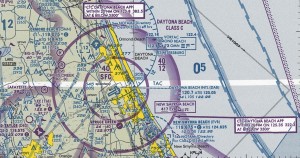

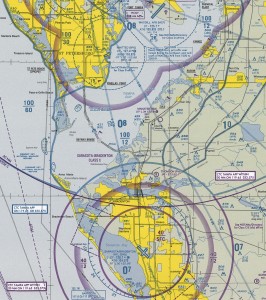

Comments on this entry are closed.
Departing from KABQ starts with Clearance delivery, which is where you receive the squak. Typically it’s done at a ramp. You then go to ground before entering a movement area (a taxiway).
Controller: “Cessna 123NU squawk 2343, maintain 2000 on departure”
You: “Cessna 123NU, two thousand, squawk 2342?.
Controller: “Cessna 123NU read back correct contact ground on 121.9 for taxi”
———————————————————————————————
Read back correct???
Great job, every once in a while one needs a refresher, thanks!
another question. If i got my squawk code and had my VFR flight following en route. My cruise altitude will be flying through Class C airspace and the altitude was approved by the approach. Am i clear to enter Class C airspace or do i have to contact the tower of the Class C before i could enter?
Thanks for the question Jeremy. We will be discussing this in the next episode of Stuck Mic AvCast.
Great article. I am currently preparing for a cross country to Daytona and was surprised to find Daytona as the example given, so that was pretty cool. Thank you for the help!
Hey great post. I hope it’s alright that I shared this on my FB,
if not, no issues just tell me and I’ll delete it.
Regardless keep up the good work.
Very useful – thanks! I fly a lot in Florida, but I appreciate that it applies all over the US.
Great information thanks for sharing it with us.
Great information thanks for sharing it with us.
If you happen to be ready, fire up Roblox Studio!